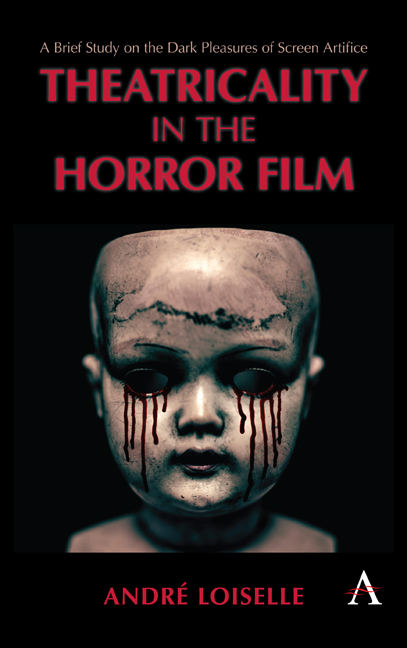Book contents
- Frontmatter
- Contents
- List of Illustrations
- 1 Introduction: Of Monsters and Monstration
- 2 Horror, Realism and Theatricality
- 3 The Theatricality of Monstrous Villainy in Film Adaptations of Horror Plays
- 4 The Theater as Locus Horribilis: Staging the Paradox of Tragic Horror
- 5 The Theatricality of Horror: Characters, Unities and Styles
- 6 Conclusion: The Theatricality of Horror Spectatorship
- Bibliography
- Index
6 - Conclusion: The Theatricality of Horror Spectatorship
Published online by Cambridge University Press: 16 November 2019
- Frontmatter
- Contents
- List of Illustrations
- 1 Introduction: Of Monsters and Monstration
- 2 Horror, Realism and Theatricality
- 3 The Theatricality of Monstrous Villainy in Film Adaptations of Horror Plays
- 4 The Theater as Locus Horribilis: Staging the Paradox of Tragic Horror
- 5 The Theatricality of Horror: Characters, Unities and Styles
- 6 Conclusion: The Theatricality of Horror Spectatorship
- Bibliography
- Index
Summary
The previous chapters have argued that, in both form and content, the horror film relies on cinematic theatricality to challenge the realism of normality. Adopting and adapting dramatic practices that sometimes date back to ancient Greek tragedy, the theatricality of the horror film is instrumental in providing the audience with an experience of dread and fear that “may take us back to the defining moments of Western culture, when pity and terror were the crucial and cathartic responses to tragedy” (Kawin 2012, 16). Whether the horror spectator can actually achieve catharsis is debatable, but there is little doubt that the scary movie can engage the audience at a deeper physical level than any romantic comedy, docudrama or western ever could. More so than with any other genre, spectators ostentatiously interact with horror films, screaming at the screen and histrionically chastising characters for their foolish behavior in the face of monstrous threats.
Much has been written on the way in which public screenings of The Rocky Horror Picture Show (1975, Jim Sharman), with its rowdy spectators dressed up as campy monsters who insult the characters and sign along with Tim Curry, Susan Sarandon, Meat Loaf and the rest, break with the tradition of silent, absorbed spectatorship that characterizes conventional cinema- going experiences (Dika 2003, 104; Staiger 2000, 45– 46). However, while Rocky Horror stands as a unique example of spectator involvement in the film- viewing experience, it only represents a spectacular exaggeration of what happens at most horror film screenings. As Heather and Matthew Levy observe, “even after multiple viewings of the same horror film, someone will tell a character, ‘Don't open that door!’ Has that participant really forgotten they are not watching a ‘real’ event? Has he or she really forgotten she is at the movies. Or, does the spectator engage in a simulation like a fan of Rocky Horror?” (Levy and Levy 2008, 99). The answer to this rhetorical question is clearly the latter. The spectator does not simply blurt out at the screen out of uncontrollable terror. Rather, this is a conscious engagement with the performance of fear that aims to add to the cinematic experience of fellow spectators.
- Type
- Chapter
- Information
- Theatricality in the Horror FilmA Brief Study on the Dark Pleasures of Screen Artifice, pp. 99 - 108Publisher: Anthem PressPrint publication year: 2019



